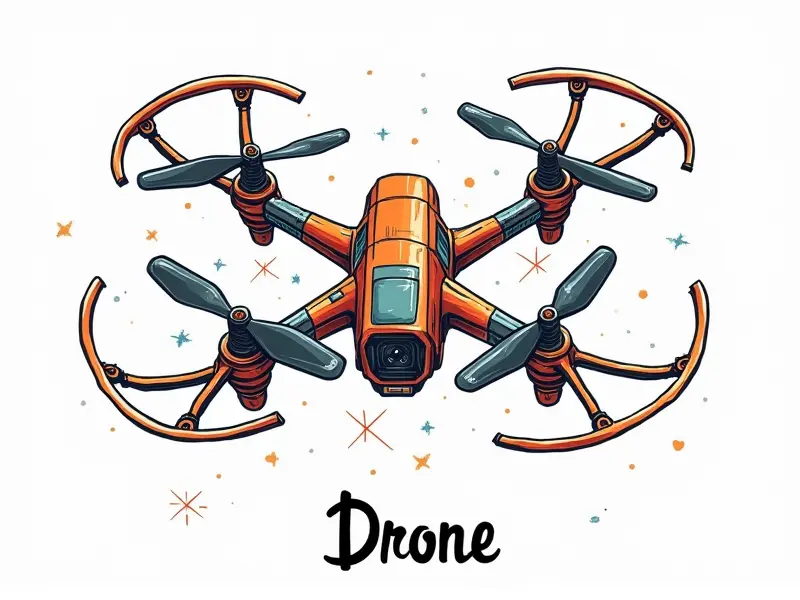How fast can RC planes go?

Remote control (RC) airplanes have long been a passion for hobbyists and enthusiasts alike. From the serene beauty of flying models to the adrenaline rush of racing, these aircraft come in various shapes and sizes, each with its unique capabilities. One of the most intriguing aspects of RC planes is their top speeds. In this article, we'll delve into how fast RC airplanes can fly, explore the fastest models on the market, and discuss the factors that contribute to achieving high velocities.
How Fast Can RC Airplanes Fly?
The speed at which an RC airplane can travel depends significantly on its design, power source, and aerodynamics. Generally, most hobby-grade RC planes have a top speed ranging from 30 to 60 miles per hour (mph). However, specialized racing models and high-performance aircraft can reach much higher velocities.
Top Speeds of RC Planes Revealed
The fastest RC airplanes are designed with aerodynamic efficiency and powerful propulsion systems in mind. These planes often feature sleek designs that minimize drag while maximizing thrust. The top speeds achieved by these models can exceed 100 mph, making them a thrilling spectacle for spectators.
Factors Affecting Top Speed
- Aerodynamics: Efficient wing shapes and streamlined fuselages reduce air resistance.
- Power Source: Electric motors or nitro engines provide the necessary thrust for high speeds.
- Weigh-to-Thrust Ratio: A lower weight relative to engine power allows for better acceleration and sustained speed.
The Fastest RC Planes on the Market
A variety of manufacturers produce RC planes capable of impressive velocities. Here are some of the fastest models currently available:
E-Spyder E-450
With its electric propulsion system, the E-Spyder E-450 can reach speeds up to 120 mph. Its lightweight carbon fiber construction and optimized aerodynamics make it a favorite among speed enthusiasts.
HPI RS5E Electric Race Plane
The HPI RS5E is another high-speed contender, boasting electric motors that push this model past the 90 mph mark. It's designed for competitive racing with advanced features like adjustable wing geometry.
RC Plane Racing: Pushing Speed Limits
RC plane racing is a popular activity among hobbyists who want to test their skills and equipment against others. Events often feature multiple classes based on aircraft type, size, and power source. Racers compete in tight circuits, pushing their planes to the limits of speed and maneuverability.
Racing Rules and Regulations
Organized races typically have strict rules regarding model specifications, safety equipment, and conduct during competition. These regulations ensure fair play and prevent accidents.
Maximum Speed of RC Aircraft Unveiled
The maximum speed achievable by an RC plane is determined by a combination of design elements and environmental factors such as air density and temperature. While hobby-grade models rarely exceed 100 mph, specialized racing planes can reach speeds well over 150 mph under optimal conditions.
Breaking Down RC Plane Velocity Records
The world record for the fastest RC plane is held by a custom-built model that achieved an astonishing speed of 279.6 mph in a controlled test flight. This remarkable feat showcases the potential of advanced aerodynamics and powerful propulsion systems.
Achieving High Speeds in RC Aircraft
To maximize your RC plane's performance, consider these tips:
Optimize Aerodynamics
- Streamline fuselage design to reduce drag.
- Select appropriate wing shapes and sizes for high-speed flight.
Increase Power Output
- Upgrade to more powerful electric motors or nitro engines.
- Optimize propeller size and pitch for maximum thrust.
Lightweight Construction
- Use lightweight materials like carbon fiber or composite plastics.
- Minimize unnecessary components to reduce overall weight.
Exploring RC Airplane Maximum Velocities
The exploration of maximum velocities in RC aircraft continues as technology advances and new designs emerge. As hobbyists push the boundaries, we can expect even faster models with improved features and capabilities.
Trends in High-Speed RC Planes
- Electric Propulsion: The shift towards electric motors due to their efficiency and ease of use.
- Nano Technology: Miniaturization of components for better performance-to-weight ratios.
- Aerodynamic Innovations: New wing shapes, airfoils, and surface treatments that enhance speed.
RC Plane Speed: What's Possible Today?
The current state of RC plane technology offers a wide range of speeds depending on the model and intended use. From leisurely flights to high-speed racing, there are options for every enthusiast looking to explore the limits of their aircraft.
Future Prospects
- Innovative Designs: Continued development of new aerodynamic concepts.
- Sustainable Power Sources: Exploration of alternative energy solutions like solar power.
- Advanced Materials: Utilization of cutting-edge materials for lighter, stronger planes.
The Fastest RC Plane Models Today
To conclude, here are some of the fastest RC plane models available today:
- E-Spyder E-450: Up to 120 mph
- HPI RS5E Electric Race Plane: Over 90 mph
- Custom-built racing planes: Exceeding 279.6 mph (world record)
RC Planes: Testing Top Speeds
Testing the top speeds of RC planes involves rigorous preparation, safety measures, and precise execution. Enthusiasts often conduct trials in controlled environments to ensure accurate results while minimizing risks.
Safety First
- Helmets: Mandatory for pilots during testing.
- Flight Area Restrictions: Clear boundaries and no-fly zones.
- Emergency Protocols: Procedures for handling malfunctions or accidents.
Conclusion
The world of RC planes is a dynamic and exciting field, with ongoing advancements in technology pushing the limits of speed and performance. Whether you're interested in leisurely flights or high-speed racing, there's an RC plane out there that can meet your needs and exceed your expectations.

